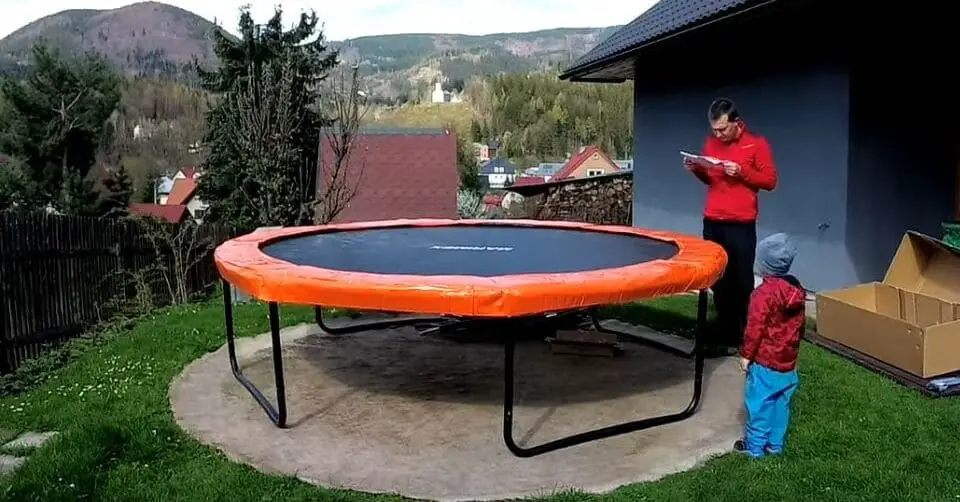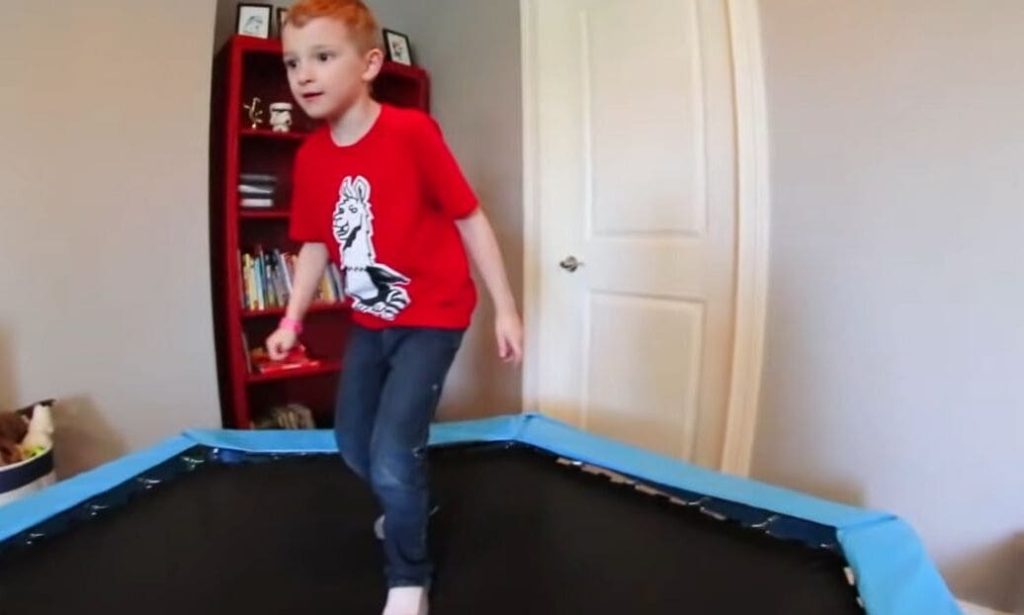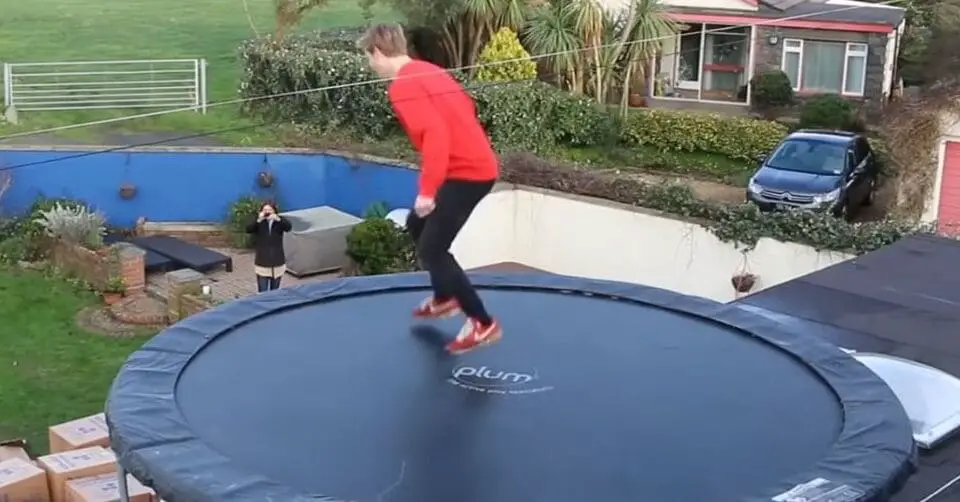Trampolines have become a popular source of entertainment, exercise, and sport for people of all ages around the world. However, the history of trampolines dates back several centuries, with the concept evolving and transforming over time.
Trampolines have a rich history, with many interesting facts and stories that have contributed to their popularity. From the earliest devices resembling trampolines to the high-tech trampolines used for space training, the evolution of trampolines has been remarkable.
In this article, we will delve into the history of trampolines, exploring their invention, evolution, and application.
We will also discuss the design and construction of trampolines, the health benefits and risks associated with their use, and the safety concerns and risks of trampoline parks. So, let’s take a jump into the fascinating world of trampolines!
Trampoline history facts: Trampoline history is a rich and interesting subject, with many fascinating facts and stories to explore. From their invention to their evolution and application, trampolines have come a long way since their early beginnings, and their popularity continues to grow as a source of entertainment, exercise, and sport.
Trampoline History Facts
- Trampolines have a fascinating history that spans centuries. Here are some interesting facts about the history of trampolines:
- Trampolines can be traced back to the Inuit people of Greenland, who used walrus skins to toss each other into the air for fun.
- The modern trampoline was invented in 1934 by George Nissen and Larry Griswold, two gymnasts from the University of Iowa.
- The word “trampoline” comes from the Spanish word “trampoline,” which means diving board.
- The first trampolines were made from scrap steel and canvas.
- Trampolines were first used in the circus as a way for performers to launch themselves into the air and perform aerial stunts.
- Trampolines were introduced to the Olympics in 2000 as a competitive sport.
- NASA has used trampolines to help astronauts regain muscle and bone density after spending time in zero gravity.
- In the 1960s and 1970s, trampolines became popular for home use and were sold as toys. Trampolines have been used for military training, especially for paratroopers who need to learn how to land safely.
- Today, trampolines are a popular form of exercise and entertainment, with trampoline parks and backyard trampolines being a common sight in many countries around the world.
History of Trampolines

The trampoline is a popular recreational device that has been around for over 80 years. Its origins can be traced back to ancient civilizations that used a similar device for acrobatic and athletic training.
we will delve into the history of trampolines, starting with the early devices that resembled trampolines and culminating with the invention of the modern trampoline.
Early Devices Resembling Trampolines
The concept of a springboard used for acrobatic training and performances dates back to ancient civilizations. The Persians, for example, used a similar device in their military training. The Chinese also had a similar device called the bungee bed, which was used to train acrobats.
In the early 20th century, several devices that resembled trampolines were developed. The first of these was the “bouncing rig” created by a man named Du Trampoline in France in 1910.
The bouncing rig consisted of a canvas sheet stretched over a frame, with a set of coiled springs attached to the frame.
Another early device that resembled a trampoline was the “trampoline bed,” which was created by a man named George Nissen in the 1930s. The trampoline bed was made of canvas and metal springs and was used primarily for acrobatic training.
The Invention of the Trampoline
The trampoline has become a beloved pastime for many people around the world, but few people know the fascinating history behind its creation.
we’ll explore the invention of the trampoline and the people who made it possible.
When Was the Trampoline Invented?
The trampoline as we know it today was invented in 1934 by George Nissen, an American gymnast, and his coach Larry Griswold. However, the concept of a device that uses springs to propel a person into the air dates back much further.
Early Devices Resembling Trampolines
In ancient times, acrobats and circus performers would use devices made of stretched animal skins to propel themselves into the air. These early trampoline-like devices were called “bouncing beds” or “springboards.”
In the 19th century, a French circus performer named Du Trampoline popularized a device made of a tightrope and springs, which he used to perform high-flying acrobatic feats.
The Invention of the Trampoline
The modern trampoline was invented by George Nissen and Larry Griswold in 1934. Nissen had been fascinated with the idea of a “bouncing rig” ever since he watched trapeze artists use safety nets to cushion their falls.
He began experimenting with different materials and designs and eventually settled on a device made of a steel frame and a stretched canvas sheet.
Nissen and Griswold’s first trampoline was made from scrap steel and canvas. They named their invention the “trampoline,” a combination of the Spanish word “trampoline,” which means diving board, and the suffix “-line,” which was commonly used to describe sports equipment at the time.
What Did the First Trampoline Look Like?
The first trampoline was made of a steel frame and a stretched canvas sheet. It was approximately 3 meters in diameter and 1 meter high. The canvas was stretched tightly over the
frame and secured with springs. The device was designed to be used for acrobatic and gymnastic training, as well as for entertainment.
The first public demonstration of the trampoline took place in 1936 at the Iowa State Fair. Nissen and Griswold set up a trampoline and performed acrobatic feats, drawing a large crowd and generating lots of excitement.
Trampolines and World War II

Trampolines have come a long way since their inception, with their history being filled with many interesting facts and milestones. One of the most interesting chapters in the history of trampolines is their use during World War II.
Trampolines played an important role in training pilots during the war, and their use was just the beginning of their evolution as a tool for training and entertainment.
Evolution of the Application of Trampolines
Trampolines have come a long way since their invention in the 1930s. Initially used for entertainment purposes, trampolines have evolved to become an important tool for training and even as a sport. Here is a brief overview of the evolution of the application of trampolines:
Entertainment
The first trampolines were created for entertainment purposes. George Nissen and Larry Griswold, the inventors of the trampoline, initially used it as part of their acrobatic routine.
They soon realized the potential of the trampoline as a standalone act and began performing shows featuring the trampoline.
Trampolines also gained popularity in circuses and carnivals, where they were used for acrobatic acts and as a fun attraction for audiences. The entertainment value of trampolines led to the creation of backyard trampolines, which became a popular item for families to have in their homes.
Military Training
During World War II, trampolines were used to train pilots and navigators for the US military. The trampoline was used to simulate the movements of aircraft, which helped pilots and navigators develop their balance, coordination, and reflexes.
Trampolines were also used to train paratroopers for the military. The trampoline was used to simulate the experience of jumping out of an airplane, which helped paratroopers develop their landing skills and get used to the sensation of falling through the air.
Trampolines and NASA: Space Training
The use of trampolines evolved in the 1950s when NASA began using them to train astronauts for space missions. Trampolines were used to simulate the effects of zero gravity, which astronauts needed to be able to handle when they went into space.
Trampolines also helped astronauts develop their balance, coordination, and agility.
NASA used trampolines to train astronauts for the Mercury, Gemini, and Apollo missions. The trampoline training was part of the overall training program that helped prepare astronauts for the rigors of space travel.
Trampolines also played a role in the development of equipment for space travel. NASA used trampoline technology to create shock-absorbing systems for the space capsules that astronauts traveled in.
Trampolines in the Olympics
Trampolines also have a place in the world of sports, with trampolining being introduced as an Olympic sport in 2000. However, trampolines were used in the Olympics long before that as a training tool for gymnasts.
In the 1950s, trampolines were used in competitive gymnastics as a way to improve balance, coordination, and strength. Trampolines helped gymnasts learn new maneuvers and improve their technique.
By the 1960s, trampolining had become a sport in its own right and was included in the Tokyo Olympics in 1964.
Trampolining as an Olympic sport involves performing acrobatic maneuvers while bouncing on a trampoline. The sport requires a high level of skill and athleticism, with athletes judged on the degree of difficulty of their maneuvers and their execution.
Today, trampolining is a popular sport, with athletes from all over the world competing at the highest level.
Trampolines have also become a popular form of entertainment, with trampoline parks becoming increasingly popular. Trampoline parks offer a safe and controlled environment for people to bounce and perform acrobatic maneuvers.
They are a fun way to get exercise and are enjoyed by people of all ages.
Trampoline Design and Construction
Trampolines have come a long way since their invention in the 1930s, and the design and construction of trampolines have evolved to become safer, more durable, and more functional. Here is a closer look at some of the key aspects of trampoline design and construction:
What are Trampolines Made of?
Trampolines are typically made of a steel frame, with a jumping surface made of a synthetic material such as polypropylene. The jumping surface is attached to the frame using springs or elastic bands, which give the trampoline its characteristic bounce.
The springs are typically made of steel, while the frame can be made of steel or aluminum.
The padding around the frame and springs, also known as the safety pad, is made of foam and has a durable cover. The safety pad helps to protect jumpers from the hard metal frame and springs and also provides some cushioning in case of falls.
How Many Springs Does a Trampoline Have?

The number of springs on a trampoline varies depending on the size and shape of the trampoline. Generally, larger trampolines will have more springs than smaller ones, to provide a greater amount of bounce.
The number of springs can also affect the weight limit of the trampoline, as more springs can support more weight.
For example, a 14-foot trampoline may have 96 to 112 springs, while a 10-foot trampoline may have 60 to 72 springs. The type and quality of the springs can also affect the performance and longevity of the trampoline.
How Long Do Trampolines Last?
The lifespan of a trampoline depends on several factors, including the quality of materials, the frequency of use, and the maintenance of the trampoline. A well-maintained trampoline that is used regularly can last up to 10 years or more.
To extend the life of a trampoline, it is important to keep it clean and dry, to regularly inspect and tighten bolts and screws, and to replace any worn or damaged parts.
It is also important to follow the manufacturer’s guidelines for weight limits and usage, to avoid overloading the trampoline and causing damage.
Blanket Toss Game by Inuit
The origins of trampolining can be traced back to the Inuit people, who used to play a game called “blanket toss” or “blanket skating” using animal skins as a springboard.
The game involved several people holding the edges of a blanket and using it to toss a person into the air, who would then perform acrobatic feats before landing back on the blanket.
The blanket toss game was later adapted by circus performers and acrobats, who used wooden boards and springs to create a similar bouncing effect. This eventually led to the development of the modern trampoline.
Browder Life Safety Net
In recent years, trampoline safety has become a major concern, with increasing numbers of injuries and accidents related to trampoline use. To address this issue, trampoline manufacturers have developed new safety features, such as the Browder Life Safety Net.
The Browder Life Safety Net is a flexible netting that is attached to the perimeter of the trampoline frame, to prevent jumpers from falling off the trampoline.
The net is designed to be durable and resistant to tearing or punctures and is supported by a series of poles or arches to keep it upright.
Other safety features that may be included on trampolines include reinforced stitching on the jumping surface, padded safety poles, and safety enclosures to prevent jumpers from landing on the springs or frame.
These safety features help to make trampolines safer and more enjoyable for users of all ages.
Health Benefits and Risks of Trampolines
Trampolines are known for their fun and entertainment value, but they also come with certain health benefits and risks.
we will explore the health benefits and risks of trampolines and provide you with the information you need to make an informed decision about using them.
Calories Burned on a Trampoline
Trampolining is an excellent form of exercise that can help you burn calories and improve your cardiovascular health. According to a study published by the American Council on Exercise, trampolining can burn up to 12 calories per minute, which is equivalent to jogging.
This means that an hour of trampolining can burn between 600 and 720 calories, depending on the intensity of your workout.
Pregnant Women Jumping on Trampolines

Pregnancy is a delicate time, and it is important to take extra precautions to ensure the safety of both the mother and the baby. While trampolining can be an enjoyable activity, pregnant women should avoid it, especially during the second and third trimesters.
The sudden and jarring movements associated with trampolining can put excessive strain on the joints and ligaments of the pregnant woman, potentially leading to injury or complications.
Wind Speed that Will Lift a Trampoline
Trampolines are lightweight and can easily be lifted by strong winds. The wind speed required to lift a trampoline depends on several factors, such as the weight of the trampoline, the strength of the wind, and the angle of the wind.
In general, winds over 30 miles per hour can be dangerous and potentially lift a trampoline. Therefore, it is important to take measures to secure your trampoline during windy conditions, such as anchoring it to the ground or storing it indoors.
How High Do Trampoline Gymnastics Jump?
Trampoline gymnastics is a sport that requires athletes to perform aerial maneuvers while bouncing on a trampoline. The height that trampoline gymnasts can reach depends on several factors, such as their body weight, strength, and technique.
In general, trampoline gymnasts can reach heights of up to 30 feet, which is equivalent to a three-story building.
However, reaching such heights requires years of training, skill, and experience, and should only be attempted by professional athletes under controlled conditions.
Risks of Trampolining
While trampolining can offer many health benefits, it also comes with certain risks, especially if safety precautions are not followed. Some common risks associated with trampolining include:
Falls and injuries – Falling off the trampoline or landing incorrectly can lead to fractures, sprains, or other injuries.
Collisions – Multiple people jumping on the trampoline at the same time can increase the risk of collisions, which can lead to injuries.
Overuse injuries – Repeated jumping and bouncing can lead to overuse injuries, such as stress fractures or tendonitis.
Pinch points – The springs and frame of the trampoline can create pinch points that can cause injury.
Suffocation – Young children can become trapped in the springs or netting of the trampoline, potentially leading to suffocation.
To minimize the risks associated with trampolining, it is important to follow safety guidelines and precautions, such as:
- Using a safety net or enclosure to prevent falls and collisions.
- Jumping one person at a time to prevent collisions.
- Use a trampoline mat that is in good condition and free of tears or holes.
- Ensuring that the trampoline is securely anchored to the ground.
- Providing adult supervision when children are using the trampoline.
Trampoline Parks
Trampolining has become increasingly popular as a recreational activity, and trampoline parks have become a popular destination for those seeking an adrenaline rush.
Trampoline parks offer a variety of activities, from free jumping to dodgeball, basketball, and foam pits. While these parks can be a fun way to stay active, there are also risks associated with trampolining that need to be taken into consideration.
Old and New Trampoline Parks
Trampoline parks have been around for decades, but they have seen a significant increase in popularity in recent years. The first trampoline park was opened in Las Vegas in 2004, and since then, they have popped up all over the world.
These parks are typically large indoor spaces that are filled with trampolines and other equipment. The design and layout of the parks can vary, but they all aim to provide a safe and fun environment for people to jump and play.
Older trampoline parks were often designed for professional or competitive trampolining, and they featured fewer safety features. Newer trampoline parks are designed with safety in mind and often feature more padding, safety nets, and other safety measures.
These parks are also typically designed for a broader audience, including children and families.
Safety Concerns and Risks
While trampoline parks can be a fun way to stay active, they also pose some risks. Injuries can occur when people jump too high, land awkwardly, or collide with other jumpers.
Common injuries include sprains, fractures, and head injuries. In some cases, these injuries can be severe and require medical attention.
To minimize the risks associated with trampolining, it is important to follow the rules and guidelines established by the park.
These rules may include restrictions on the number of jumpers on a trampoline, restrictions on the types of tricks or maneuvers that can be performed, and requirements to wear safety equipment, such as helmets.
Other Formats of Trampolines
In addition to trampoline parks, there are other formats of trampolines that can be used for recreational or competitive purposes. One popular format is the backyard trampoline.
These trampolines are typically smaller than those found in trampoline parks, and they are designed for use in a backyard or other outdoor space.
Backyard trampolines can be a fun way for children and families to stay active, but they also pose some risks. Injuries can occur when people jump too high or collide with other jumpers.
To minimize the risks associated with backyard trampolines, it is important to follow the manufacturer’s guidelines for installation and use.
These guidelines may include restrictions on the number of jumpers on the trampoline, requirements to wear safety equipment, and regular maintenance and inspections.
Another format of trampoline is the competition trampoline. These trampolines are used for competitive purposes and are typically larger and more rigid than those found in trampoline parks or backyards.
Competition trampolines are used in events such as the Olympic Games and require specialized training and equipment to use safely.
Fun and Interesting Trampoline Facts
Trampolines are not only a source of entertainment and exercise, but they also have an interesting history and some unique features.
we will share some fun and interesting trampoline facts that you may not know.
Why are Trampolines Called Trampolines?
The word trampoline comes from the Spanish word “trampoline” which means springboard or diving board. However, the first modern trampoline was not created until the 1930s by George Nissen, an American gymnast.
Nissen was inspired by watching circus performers bounce on a net and began experimenting with different materials and designs to create a device that would allow for safer and higher jumps.
He eventually settled on a canvas stretched over a metal frame with springs, which he called a trampoline.
Trampolines and the Olympics
Trampolining became an Olympic sport in the year 2000 at the Sydney Summer Olympics. The competition includes both individual and synchronized events, where gymnasts perform a routine of acrobatic moves while bouncing on a trampoline.
The trampoline used in Olympic competitions is rectangular and measures 14 feet by 7 feet. The bed, or jumping surface, is made of nylon and the frame is made of steel.
The trampoline is placed on a platform that is 3 feet high, and gymnasts are required to bounce to a height of at least 26 feet during their routine.
Other Fun and Interesting Facts
- Trampolines were first used in the military during World War II to help train pilots and navigators in spatial orientation and aerial awareness.
- The largest trampoline in the world is located in Australia and measures 135 feet long and 50 feet wide.
- In 2004, a group of 30 people set a world record for the most people bouncing on a trampoline at the same time. They achieved a total of 21 bounces in one minute.
- The longest time spent bouncing on a trampoline is 53 hours and 30 minutes, achieved by two British men in 2019.
- In 2014, a man named Daniel Fowler-Prime set a world record for the highest bounce on a trampoline, reaching a height of 22 feet and 3 inches.
- Jumping on a trampoline can burn up to 1000 calories per hour, making it a great form of exercise.
- Trampolines have been used in the training of athletes in other sports such as diving, snowboarding, and freestyle skiing.
- Trampolining is not only a fun and exciting activity, but it also has numerous health benefits including improving cardiovascular health, muscle tone, and coordination.
- Safety should always be a top priority when using a trampoline. It is recommended that trampolines be used under adult supervision and with appropriate safety equipment such as a safety net and padding.
FAQs
Q.1 How did trampolines evolve?
Trampolines evolved to become more durable and safe, with improvements made to the materials used, such as the switch from canvas to nylon. Trampolines were also developed for recreational use, with backyard trampolines becoming popular in the 1950s.
Q.2 What were the original uses of trampolines?
The original uses of trampolines were for training purposes in gymnastics and diving, as well as for military training. Trampolines were also used in space exploration by NASA, as astronauts would use trampolines to simulate weightlessness and practice movements.
Q.3 What was the first animal to jump on a trampoline?
The first animal to jump on a trampoline was a kangaroo. In the 1950s, a traveling show featuring a kangaroo named Joey who would perform tricks on a trampoline helped popularize the use of trampolines for entertainment.
Q.4 What is the significance of the name “trampoline”?
The name “trampoline” comes from the Spanish word “trampoline,” which means diving board. The term was adopted to describe the bouncy surface of the device.
Q.5 What was the role of trampolines in the Olympics?
Trampolines were first introduced in the Olympics in 2000 as a gymnastics event. Trampolining involves performing a routine of acrobatic moves while bouncing on a trampoline.
Q.6 What are some popular trampoline games and activities?
Some popular trampoline games and activities include dodgeball, basketball, and bouncing competitions. Trampolines can also be used for exercise and fitness routines.
Q.7 What are the safety guidelines for using trampolines?
Some safety guidelines for using trampolines include always having adult supervision, limiting the number of people on the trampoline, and using safety nets or pads to prevent injuries. Users should also avoid attempting dangerous stunts and ensure that the trampoline is set up properly.
Conclusion
In conclusion, trampolines have come a long way since their early inception as a device resembling a trampoline. The trampoline as we know it today was invented in the 1930s, and since then, its applications have evolved from entertainment to military training to even space training with NASA.
Trampolines have been used in the Olympics, and their design and construction have also advanced over the years. While trampolines offer health benefits such as burning calories, there are also associated risks, particularly with trampoline parks.
It is essential to consider safety concerns when using trampolines, and manufacturers have developed new formats of trampolines to mitigate some of these risks.
Nevertheless, trampolines continue to be a fun and exciting way to stay active and engaged, and they will undoubtedly remain a popular activity for many years to come.
We hope that after reading this comprehensive guide about trampoline history facts, you will have a good understanding of the topic. If you have any questions, please feel free to ask them in the comments below!

